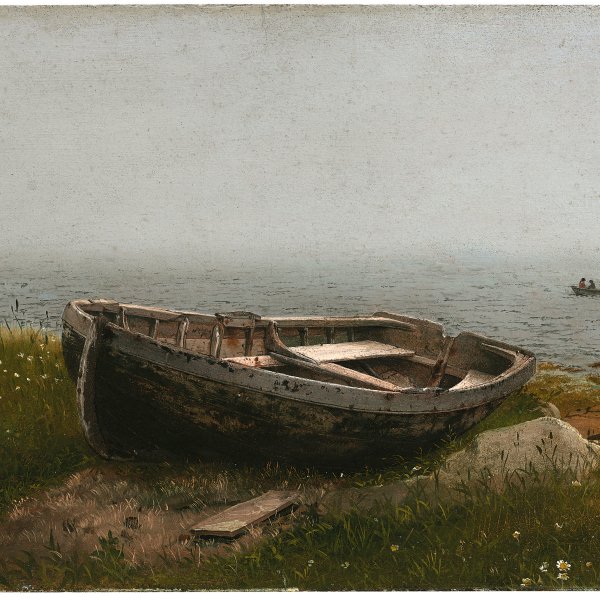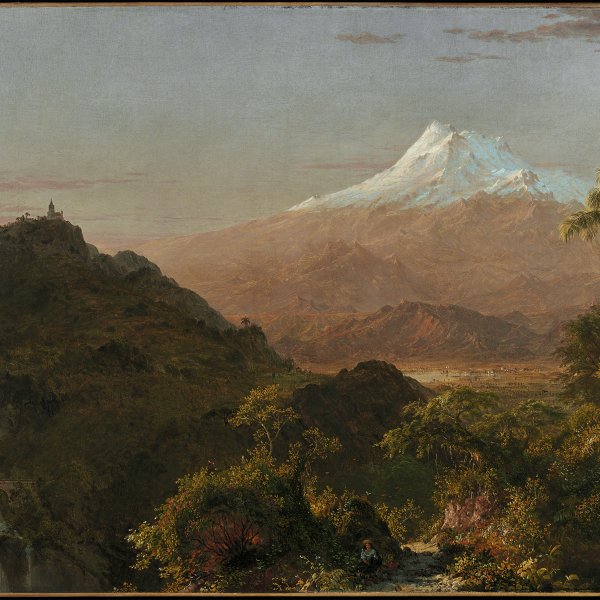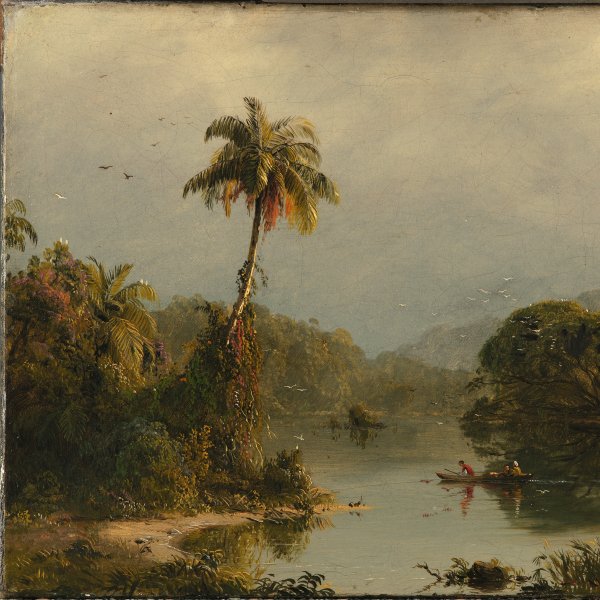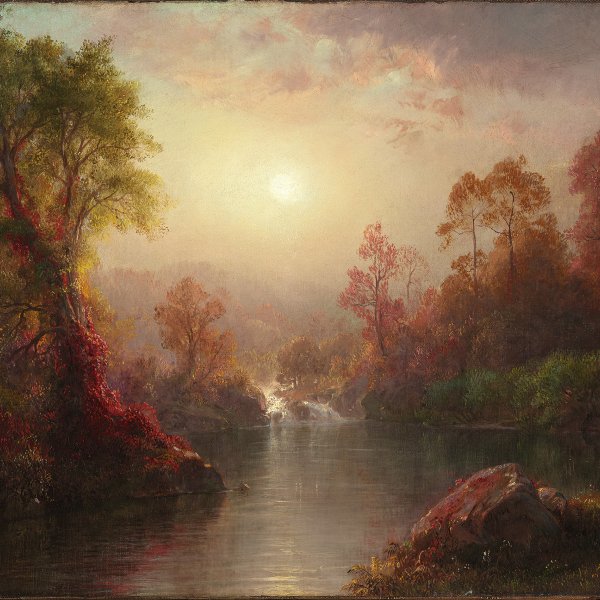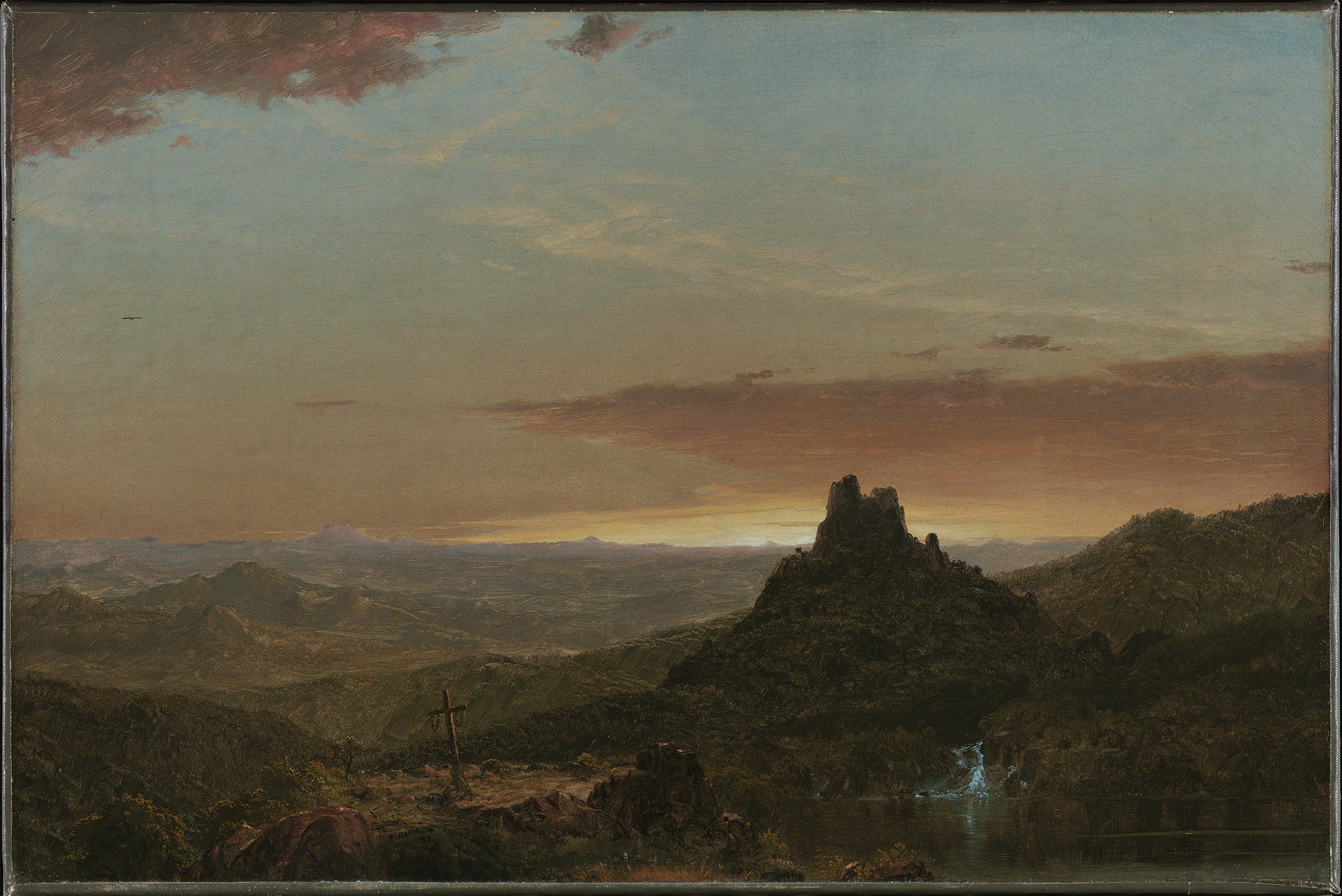Cross in the Wilderness
Throughout his career Frederic Edwin Church depicted the majestic, paradisiacal landscapes of the American continent. After the discovery and study of the area along the River Hudson, giving rise to the school of painting of that name with which Church was associated, he travelled in Europe and in South America.
Cross in the Wilderness was commissioned by the family of William Harmon Brown following the death of one of his children and is inspired by the landscapes of Ecuador and Colombia. The cross with its garlands in the foreground evokes graveyards that Church would have encountered during his trips to these two countries. The painting’s spirituality is also expressed in the waterfall and peaceful waters of the lake, a symbol of purity and of the renewal of life. The water stretches away to the right of the cross, surrounded by an imposing rock formation. The painter sets the view as a whole under a vast, evening sky.
CM
Throughout his career Church had painted a few landscapes featuring crosses to commemorate deaths, such as To the Memory of Cole, executed in 1848, which depicts a cross adorned with a garland of flowers amid desolate scenery, and the two small pictures he painted in 1865 when his two young children died of diphtheria. The artist may have produced Cross in the Wilderness in memory of a deceased child of the Brown family, who commissioned the painting. Katherine Manthorne draws an evocative comparison between this work and Nicolas Poussin’s handling of the theme of death in Arcadia in his work Et in Arcadia Ego, considering that, like Poussin, “Church was fascinated by the notion that his Arcadia [...] — the source of the creation and renewal of nature — was also the site of destruction and death.”
Katherine Manthorne also relates this cross to the “paraderos de los difuntos” that were commonly found in the Andes and mentioned by the writer Edmond Reuel Smith in the chronicle of his journey: “Along the roadside we passed many small crosses... On questioning my guide, he informed me that the places so designated were ‘paraderos de los difuntos’ (halting places of the dead). In rural districts, where population is sparse, the parishes are large: the churches are distant from each other, and as the burial-places are always near the parish church, it often becomes necessary to carry the dead a journey of one or two days [...]. On such journeys, wherever the pallbearers stop to rest, they deposit the corpse by the roadside, plant a rude cross of twigs, and repeat a few prayers for the rest of the departed.”
Paloma Alarcó


